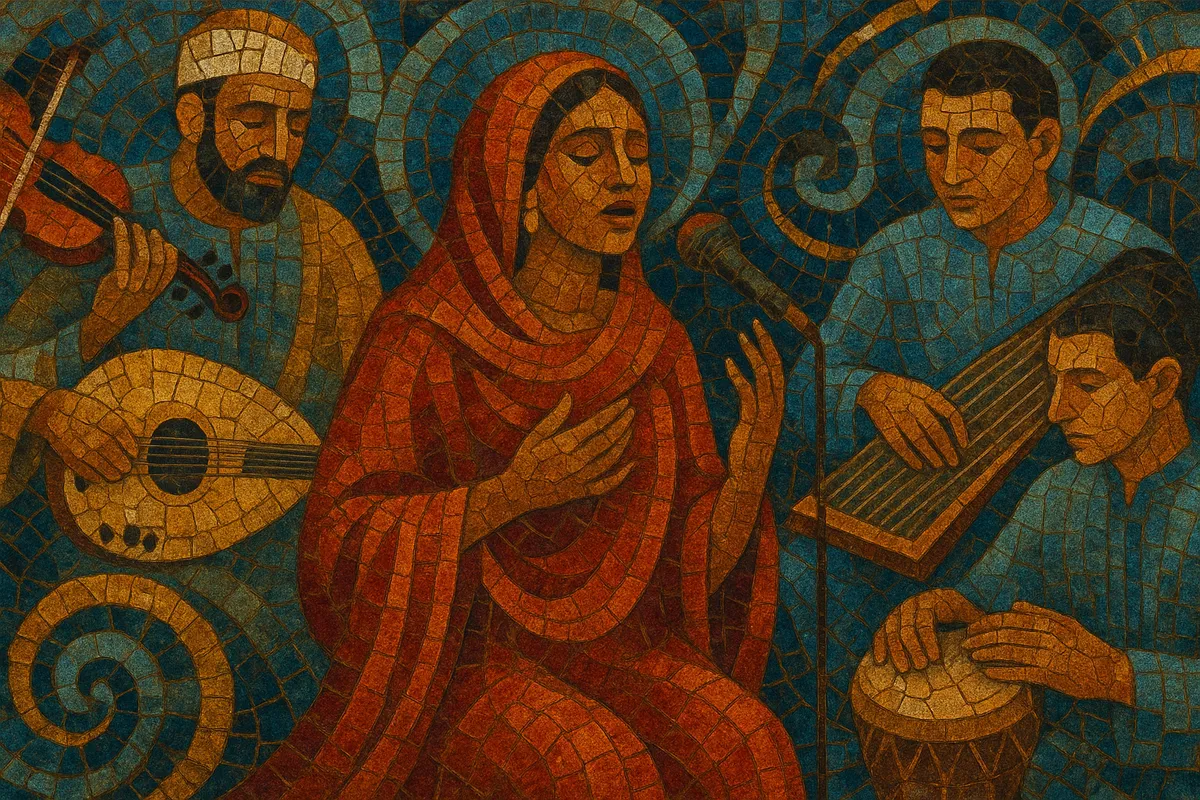Taarab is the orchestral, poetry-driven popular music of the Swahili coast, originating in Zanzibar at the turn of the 20th century. It blends Arab/Egyptian court and salon traditions, Indian Ocean trade influences, and indigenous Swahili poetic aesthetics into a refined, emotive style performed at weddings, community celebrations, and social clubs.
Its sound is characterized by lush, heterophonic textures led by a singer and backed by an ensemble featuring oud, qanun, violins, accordion or harmonium, ney, bass, and hand percussion such as riqq and darbuka; in coastal contexts, local ngoma approaches also inform groove and feel. Melodies draw on Arabic maqamat with melismatic ornamentation, while lyrics—delivered in Swahili—employ classical forms of shairi and witty double entendre, often offering social commentary.
Since the 1990s, "modern taarab" has incorporated keyboards, drum machines, and pop song structures, but it remains rooted in the genre’s poetic ethos and ceremonial function on the Swahili littoral.
Taarab emerged in Zanzibar during the late 19th and early 20th centuries, under royal patronage and exposure to Cairo’s musical life. The founding of the Ikhwani Safaa Musical Club in 1905 formalized an ensemble model that fused Arab/Egyptian repertoire concepts with Swahili poetic performance, local rhythmic sensibilities, and instruments available through Indian Ocean trade.
In the 1920s and 1930s, recording and radio helped spread taarab throughout the Swahili coast. Siti binti Saad’s landmark recordings (from 1928) carried Swahili texts of social critique and romance to audiences in Zanzibar, Tanga, Mombasa, and Dar es Salaam. Musical clubs (nadhi/culture clubs) sustained repertoire, trained musicians, and standardized ensemble practices.
After independence, taarab thrived through club circuits, state and private radio, and intercities exchanges across Tanzania and Kenya. Orchestras refined a distinctive coastal sound that balanced maqam-based melody, heterophonic strings, and Swahili lyric craft. Ensembles such as Black Star Musical Club and Culture Musical Club became institutional reference points.
From the 1990s, "taarab ya kisasa" (modern taarab) introduced keyboards, electric bass, and drum machines, tailoring songs to contemporary dance floors while preserving poetic sharpness and call-and-response choruses. Groups like East African Melody and Jahazi Modern Taarab popularized this sound. Today, taarab remains central to coastal wedding culture and continues to interact with broader East African popular styles while retaining its ceremonial and literary core.


